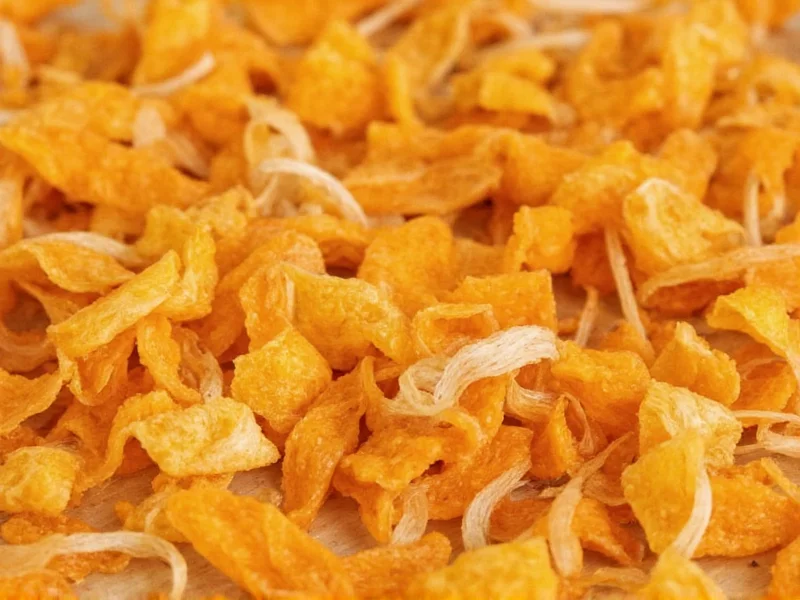Dehydrating orange peels transforms kitchen scraps into versatile ingredients with extended shelf life. This sustainable practice reduces food waste while creating valuable resources for cooking, cleaning, and crafts. Properly dehydrated orange peel retains essential oils and citrus flavor far better than store-bought alternatives, making it a worthwhile kitchen skill for home cooks and eco-conscious households.
Why Dehydrate Orange Peels?
Orange peels contain valuable compounds that become concentrated during dehydration. The resulting product offers multiple benefits:
- Preserves citrus flavor and essential oils for extended periods
- Creates zero-waste solutions from kitchen scraps
- Provides natural alternatives to artificial flavorings and cleaners
- Concentrates beneficial compounds like limonene and hesperidin
- Offers cost savings compared to purchasing dried citrus products
Three Effective Methods for Dehydrating Orange Peel
Each dehydration method offers different advantages depending on your equipment and time constraints. Proper preparation is essential regardless of method:
- Wash oranges thoroughly with vinegar solution to remove wax and pesticides
- Peel oranges using vegetable peeler or knife, avoiding white pith
- Cut peels into uniform 1/4-inch strips for even drying
- Pat dry with clean towel before processing
| Dehydration Method | Temperature | Time Required | Best For |
|---|---|---|---|
| Food Dehydrator | 135°F (57°C) | 6-12 hours | Consistent results, large batches |
| Oven Method | 170°F (77°C) | 2-4 hours | Home cooks without specialized equipment |
| Air Fryer | 150°F (65°C) | 1.5-3 hours | Quick dehydration of small batches |
Detailed Dehydration Instructions
Using a Food Dehydrator (Most Effective Method)
Arrange prepared orange peel strips in single layer on dehydrator trays without overlapping. Set temperature to 135°F (57°C) and dry for 6-12 hours. Check periodically after 6 hours—peels are done when brittle and snap easily. Rotate trays hourly for even drying. This method preserves maximum flavor and essential oils while preventing scorching.
Oven Dehydration Method
Preheat oven to its lowest setting (typically 170°F/77°C). Place peel strips on wire rack over baking sheet to allow air circulation. Prop oven door open 2-3 inches with wooden spoon to maintain proper airflow. Dry for 2-4 hours, flipping peels halfway through. Monitor closely to prevent burning, as oven temperatures can fluctuate.
Air Fryer Technique
For small batches, arrange peel strips in single layer in air fryer basket. Set to 150°F (65°C) for 1.5-3 hours. Shake basket every 30 minutes for even drying. This method works fastest but requires careful monitoring to prevent overheating delicate citrus oils.
Proper Storage of Dehydrated Orange Peel
Complete dehydration is crucial for proper storage. Test by bending a piece—it should snap cleanly without flexibility. Store in airtight containers away from light and moisture:
- Dark glass jars with tight-sealing lids
- Vacuum-sealed bags for long-term storage
- Oxygen absorbers extend shelf life significantly
Properly stored dehydrated orange peel maintains quality for 6-12 months. Check periodically for moisture or mold, especially in humid climates. For extended storage beyond one year, keep in freezer with minimal air exposure.
Creative Uses for Dehydrated Orange Peel
Dehydrated orange peel offers versatile applications beyond simple flavoring:
Culinary Applications
- Grind into citrus powder for baking and seasoning
- Add to tea blends for natural flavoring
- Create homemade orange extract by steeping in vodka
- Infuse sugars and salts for flavored finishing products
- Add to spice rubs for meats and vegetables
Household Solutions
- Make natural cleaning vinegar by steeping in white vinegar
- Create citrus-scented fire starters with melted wax
- Add to homemade potpourri blends
- Infuse olive oil for cooking or skincare
- Make natural air fresheners by simmering with spices
Troubleshooting Common Issues
Even experienced dehydrators encounter challenges. Here's how to address common problems:
- Peels becoming sticky: Indicates incomplete dehydration. Return to dehydrator for additional hours.
- Browning or scorching: Temperature too high. Reduce heat and improve air circulation.
- Mold development: Moisture remained in storage. Discard affected portions and improve drying process.
- Loss of aroma: Over-drying or excessive heat. Reduce temperature and check more frequently.
- Inconsistent drying: Rotate trays regularly and ensure uniform peel thickness.
Safety Considerations
While dehydrating orange peels is generally safe, follow these precautions:
- Always wash citrus thoroughly to remove pesticides and waxes
- Avoid using peels from conventionally grown oranges treated with post-harvest chemicals
- Never dehydrate moldy or spoiled fruit peels
- Monitor oven dehydration closely to prevent fire hazards
- Store away from direct sunlight to preserve essential oils











 浙公网安备
33010002000092号
浙公网安备
33010002000092号 浙B2-20120091-4
浙B2-20120091-4